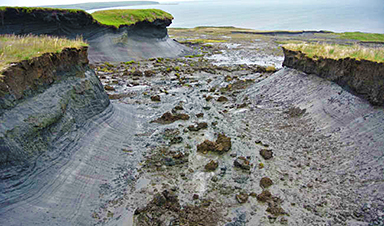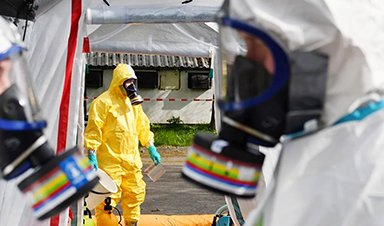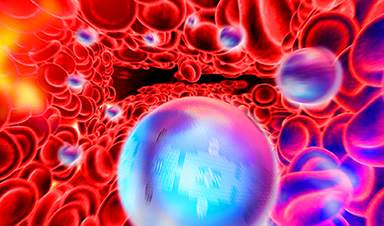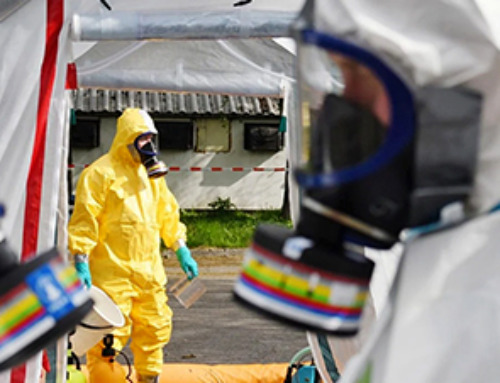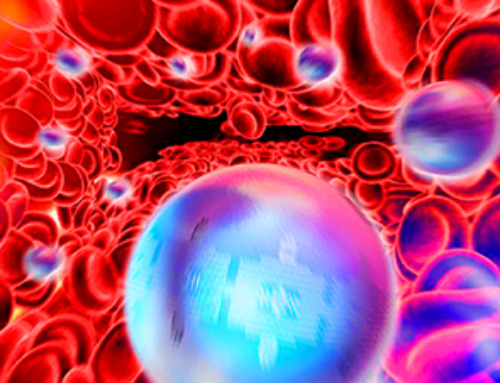Mostly found in polar regions like Siberia, Alaska, and Canada, permafrost plays a critical role in the Earth’s climate system. Imagine the ground as a giant freezer, preserving ancient organic materials for thousands of years.
These frozen soils are not just barren wastelands; they are teeming with life, albeit in a state of deep freeze. With the stability of this “frozen ground,” ecosystems and communities have adapted to its presence, relying on it for various ecological and cultural functions.
Understanding permafrost is essential as it holds the key to some of the pressing environmental challenges of our time.
Impact of Rising Temperatures
The Earth’s climate is warming, and nowhere is this more evident than in the Arctic regions. Global warming is causing permafrost to thaw, a process that has significant repercussions.
As the frozen ground begins to melt, it releases trapped greenhouse gases like methane and carbon dioxide into the atmosphere. This thawing process can be likened to opening a Pandora’s box, where the consequences are far-reaching and difficult to contain.
Rising temperatures are not just a distant problem; they are a clear and present danger that demands urgent attention. The release of these gases further accelerates climate change, creating a vicious cycle that is hard to break.
The thawing of permafrost is a ticking time bomb that could have catastrophic effects on our planet.
The potential for greenhouse gas emissions from thawing permafrost is staggering. Scientists estimate that up to 1,500 gigatons of carbon could be released into the atmosphere.
To put this in perspective, that’s more carbon than has been released by all human activities since the beginning of the Industrial Revolution. This enormous release could drastically accelerate climate change, making it even more challenging to mitigate its effects.
Think of it as opening a vault containing centuries’ worth of carbon, suddenly spilling into our already burdened atmosphere. The implications are dire, as increased greenhouse gases contribute to more frequent and severe weather events, rising sea levels, and disruptions to global ecosystems.
The Threat of Ancient Pathogens©The Threat of Ancient Pathogens
As if the release of greenhouse gases wasn’t concerning enough, scientists warn of another threat lurking within the thawing permafrost: ancient pathogens. These are viruses and bacteria that have been dormant for thousands of years, preserved in the frozen ground.
With the thaw, there is a possibility that these ancient microorganisms could be revived, posing risks to human and animal health. It’s akin to opening a time capsule, but instead of treasures, we may find hidden dangers.
The potential for these ancient pathogens to cause new outbreaks is a chilling prospect. While current research is ongoing, it’s a stark reminder of the interconnectedness of our environment and the potential consequences of disrupting its delicate balance.
Ecosystem Disruption
The thawing of permafrost doesn’t just release gases and pathogens; it also disrupts entire ecosystems. Arctic ecosystems are uniquely adapted to the cold, stable conditions provided by permafrost.
As the ground thaws, plant life and wildlife habitats are affected, creating a ripple effect throughout the ecosystem. This disruption can have severe impacts on indigenous communities that rely on these ecosystems for their livelihoods and cultural practices.
Imagine the ground beneath you shifting, altering the landscape and the resources you depend on. The loss of permafrost stability poses challenges to these communities, who have lived in harmony with their environment for generations.
The effects are not just environmental but also social and cultural, highlighting the need for inclusive solutions.
The consequences of this instability are not just inconvenient; they can be life-threatening. Picture a world where the very ground you walk on is shifting, causing structures to crumble and transportation routes to become impassable.
The cost of repairing and maintaining infrastructure in these areas is immense, placing a financial burden on governments and communities. The need to address permafrost thaw is not just an environmental issue but also an economic one, with implications for development and sustainability in Arctic regions.
In the face of these challenges, scientists and researchers are exploring potential solutions to slow permafrost thaw. One approach involves artificial cooling systems designed to stabilize the ground and prevent further thawing.
Another critical strategy is reducing global emissions to mitigate warming, addressing the root cause of permafrost thaw. These efforts require collaboration and innovation, drawing on the expertise of scientists, policymakers, and communities affected by permafrost thaw.
While the path ahead is daunting, there is hope in the collective efforts to find solutions. The future of permafrost and the ecosystems it supports depends on our ability to adapt and innovate in the face of climate change.
The thawing of permafrost is a complex issue with far-reaching implications for our planet. From the release of greenhouse gases to the potential revival of ancient pathogens, the challenges are immense.
However, through research, innovation, and collaboration, there is hope for mitigating the impacts of permafrost thaw.
News
Fever-Proof Bird Flu Variant Could Fuel the Next Pandemic
Bird flu viruses present a significant risk to humans because they can continue replicating at temperatures higher than a typical fever. Fever is one of the body’s main tools for slowing or stopping viral [...]
What could the future of nanoscience look like?
Society has a lot to thank for nanoscience. From improved health monitoring to reducing the size of electronics, scientists’ ability to delve deeper and better understand chemistry at the nanoscale has opened up numerous [...]
Scientists Melt Cancer’s Hidden “Power Hubs” and Stop Tumor Growth
Researchers discovered that in a rare kidney cancer, RNA builds droplet-like hubs that act as growth control centers inside tumor cells. By engineering a molecular switch to dissolve these hubs, they were able to halt cancer [...]
Platelet-inspired nanoparticles could improve treatment of inflammatory diseases
Scientists have developed platelet-inspired nanoparticles that deliver anti-inflammatory drugs directly to brain-computer interface implants, doubling their effectiveness. Scientists have found a way to improve the performance of brain-computer interface (BCI) electrodes by delivering anti-inflammatory drugs directly [...]
After 150 years, a new chapter in cancer therapy is finally beginning
For decades, researchers have been looking for ways to destroy cancer cells in a targeted manner without further weakening the body. But for many patients whose immune system is severely impaired by chemotherapy or radiation, [...]
Older chemical libraries show promise for fighting resistant strains of COVID-19 virus
SARS‑CoV‑2, the virus that causes COVID-19, continues to mutate, with some newer strains becoming less responsive to current antiviral treatments like Paxlovid. Now, University of California San Diego scientists and an international team of [...]
Lower doses of immunotherapy for skin cancer give better results, study suggests
According to a new study, lower doses of approved immunotherapy for malignant melanoma can give better results against tumors, while reducing side effects. This is reported by researchers at Karolinska Institutet in the Journal of the National [...]
Researchers highlight five pathways through which microplastics can harm the brain
Microplastics could be fueling neurodegenerative diseases like Alzheimer's and Parkinson's, with a new study highlighting five ways microplastics can trigger inflammation and damage in the brain. More than 57 million people live with dementia, [...]
Tiny Metal Nanodots Obliterate Cancer Cells While Largely Sparing Healthy Tissue
Scientists have developed tiny metal-oxide particles that push cancer cells past their stress limits while sparing healthy tissue. An international team led by RMIT University has developed tiny particles called nanodots, crafted from a metallic compound, [...]
Gold Nanoclusters Could Supercharge Quantum Computers
Researchers found that gold “super atoms” can behave like the atoms in top-tier quantum systems—only far easier to scale. These tiny clusters can be customized at the molecular level, offering a powerful, tunable foundation [...]
A single shot of HPV vaccine may be enough to fight cervical cancer, study finds
WASHINGTON -- A single HPV vaccination appears just as effective as two doses at preventing the viral infection that causes cervical cancer, researchers reported Wednesday. HPV, or human papillomavirus, is very common and spread [...]
New technique overcomes technological barrier in 3D brain imaging
Scientists at the Swiss Light Source SLS have succeeded in mapping a piece of brain tissue in 3D at unprecedented resolution using X-rays, non-destructively. The breakthrough overcomes a long-standing technological barrier that had limited [...]
Scientists Uncover Hidden Blood Pattern in Long COVID
Researchers found persistent microclot and NET structures in Long COVID blood that may explain long-lasting symptoms. Researchers examining Long COVID have identified a structural connection between circulating microclots and neutrophil extracellular traps (NETs). The [...]
This Cellular Trick Helps Cancer Spread, but Could Also Stop It
Groups of normal cbiells can sense far into their surroundings, helping explain cancer cell migration. Understanding this ability could lead to new ways to limit tumor spread. The tale of the princess and the [...]
New mRNA therapy targets drug-resistant pneumonia
Bacteria that multiply on surfaces are a major headache in health care when they gain a foothold on, for example, implants or in catheters. Researchers at Chalmers University of Technology in Sweden have found [...]
Current Heart Health Guidelines Are Failing To Catch a Deadly Genetic Killer
New research reveals that standard screening misses most people with a common inherited cholesterol disorder. A Mayo Clinic study reports that current genetic screening guidelines overlook most people who have familial hypercholesterolemia, an inherited disorder that [...]
